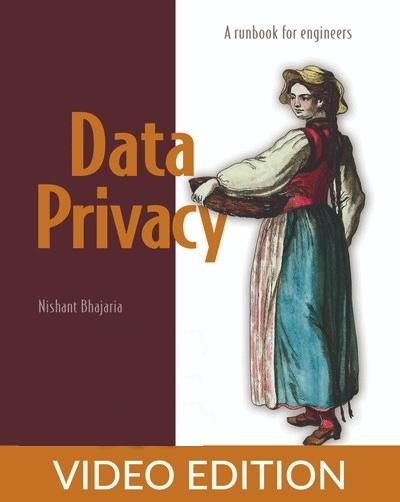
English | MP4 | AVC 1280×720 | AAC 44KHz 2ch | 12h 20m | 1.95 GB
Engineer privacy into your systems with these hands-on techniques for data governance, legal compliance, and surviving security audits.
In Data Privacy you will learn how to:
- Classify data based on privacy risk
- Build technical tools to catalog and discover data in your systems
- Share data with technical privacy controls to measure reidentification risk
- Implement technical privacy architectures to delete data
- Set up technical capabilities for data export to meet legal requirements like Data Subject Asset Requests (DSAR)
- Establish a technical privacy review process to help accelerate the legal Privacy Impact Assessment (PIA)
- Design a Consent Management Platform (CMP) to capture user consent
- Implement security tooling to help optimize privacy
- Build a holistic program that will get support and funding from the C-Level and board
Data Privacy teaches you to design, develop, and measure the effectiveness of privacy programs. You’ll learn from author Nishant Bhajaria, an industry-renowned expert who has overseen privacy at Google, Netflix, and Uber. The terminology and legal requirements of privacy are all explained in clear, jargon-free language. The book’s constant awareness of business requirements will help you balance trade-offs, and ensure your user’s privacy can be improved without spiraling time and resource costs.
Data privacy is essential for any business. Data breaches, vague policies, and poor communication all erode a user’s trust in your applications. You may also face substantial legal consequences for failing to protect user data. Fortunately, there are clear practices and guidelines to keep your data secure and your users happy.
Data Privacy: A runbook for engineers teaches you how to navigate the trade-off s between strict data security and real world business needs. In this practical book, you’ll learn how to design and implement privacy programs that are easy to scale and automate. There’s no bureaucratic process—just workable solutions and smart repurposing of existing security tools to help set and achieve your privacy goals.
What’s inside
- Classify data based on privacy risk
- Set up capabilities for data export that meet legal requirements
- Establish a review process to accelerate privacy impact assessment
- Design a consent management platform to capture user consent
Table of Contents
1 How data flows into and within your company
2 How privacy affects your business at a macro level
3 How the role of engineers has changed, and how that has affected privacy
4 Privacy A mental model
5 Privacy engineering Why it s needed, how to scale it
6 Privacy tech and tooling Your options and your choices
7 Summary
8 What this book will not do
9 Why privacy matters
10 After building the tools comes the hard part Building a program
11 As you build a program, build a privacy-first culture
12 Data, your business growth strategy, and privacy
13 Examples When privacy is violated
14 Privacy and the regulatory landscape
15 Privacy and the user
16 Summary
17 This could be your company
18 Understanding data and privacy
19 Data classification
20 Data classification An example
21 How to classify data with a focus on privacy laws
22 How you can implement data classification to improve privacy
23 Summary
24 The data classification process
25 Why data classification is necessary
26 A data inventory is not a binary process
27 Creating a baseline
28 Data inventory
29 Machine-readable tags
30 Summary
31 The technical architecture
32 Understanding the data
33 What does a successful data inventory process look like
34 When should you start the data inventory process
35 Data sharing
36 How to share data safely Security as an ally of privacy
37 Measuring privacy impact
38 Obfuscation techniques for privacy-safe data sharing
39 Privacy harms This is not a drill
40 Sharing internal IDs with third parties
41 Summary
42 Implementing the legal privacy review process
43 Integrating technical privacy reviews into the innovation pipeline
44 Making the case for a technical privacy review
45 Sample technical privacy reviews
46 Scaling the technical privacy review process
47 Summary
48 The technical privacy review
49 Data deletion
50 Deleting account-level data A starting point
51 Deleting account-level data Automation and scaling for distributed services
52 How the data collection architecture works
53 Sensitive data deletion
54 Summary
55 What does a modern data collection architecture look like
56 Who should own data deletion
57 DSAR automation, data structures, and data flows
58 Exporting user data Data Subject Access Requests
59 Internal-facing screens and dashboards
60 Setting up the DSAR process
61 Summary
62 A consent management platform
63 A data schema model for consent management
64 Building a consent management platform
65 Consent code Objects
66 Integrating consent management into product workflow
67 Other useful capabilities in a CMP
68 Summary
69 Closing security vulnerabilities
70 Protecting privacy by closing access-control gaps
71 Protecting privacy by managing perimeter access
72 Summary
73 Privacy and the regulatory climate
74 Scaling, hiring, and considering regulations
75 Summary
76 The privacy engineering domain and skills
77 Privacy, data, and your business
78 A proactive privacy program Data governance
79 Building tools and processes
80 Security, scaling, and staffing
Resolve the captcha to access the links!